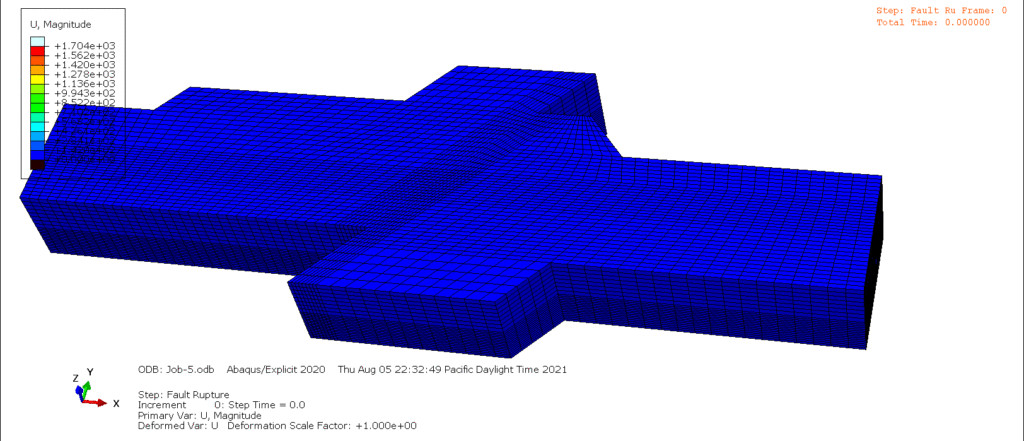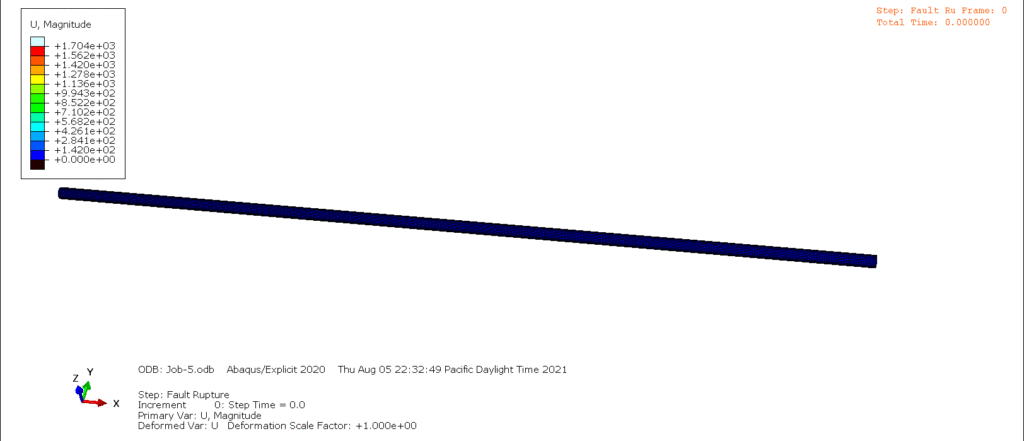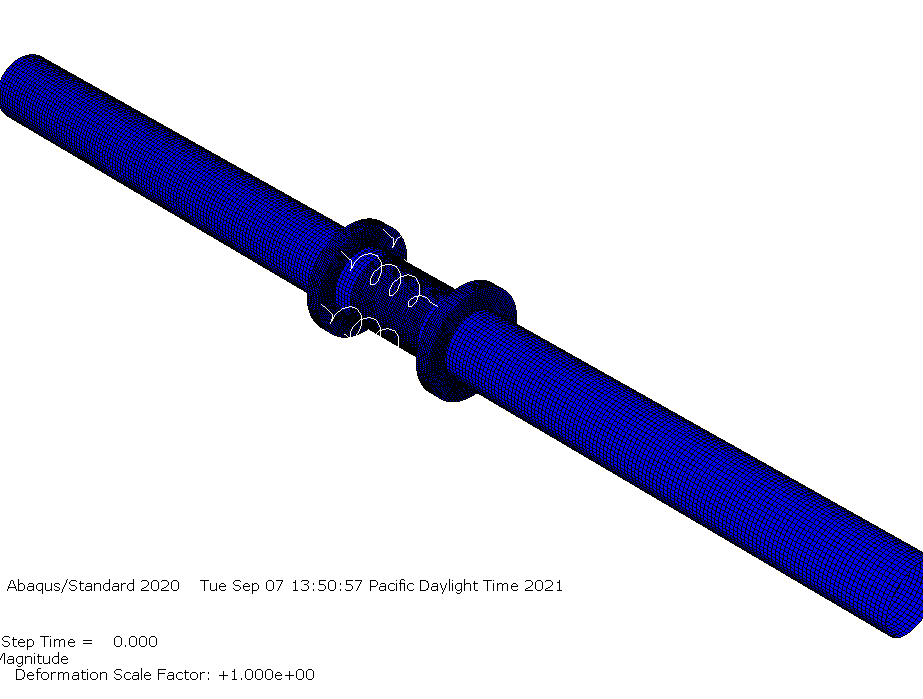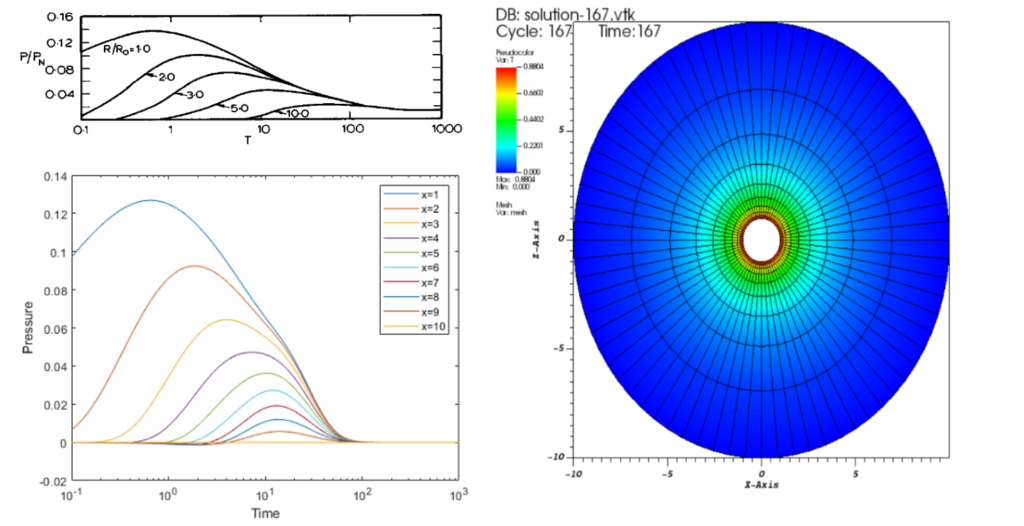FEM is a numerical method that utilizes discretization to develop then solve a system of equations to numerically approximate the solution to differential equations of interest. Beyond geotechnical modeling, FEM is very frequently used for modeling structural analysis, heat transfer, fluid flow, mass transport, and electromagnetism. In addition to modeling typical geotechnical problems with FEM, the group works on different multiphysics coupling problems.
Soil-pipeline Interaction
The group’s soil-pipeline interaction research mainly uses FEM to simulate ground movements like fault ruptures or landslides. The group is focused on developing an elasto-plastic continuum FEM model where soil is represented by solid elements and the pipeline is represented by either shell or solid elements. An example of FEM analysis is comparing numerical simulations of pipeline deformation to a large-scale fault rupture test completed at The Cornell Large Scale Lifelines Testing Facility for a PVCO pipeline. Click images to see animation.


It is increasingly common for pipelines to include special components to reduce the potential damage during geohazards. For example, a special joint structure is used in PVCO pipeline to elongate or shorten in order to reduce the damage to pipelines during the large ground deformation. The FEM is used to predict the development of axial force as the pipeline elongates during a pull-out test; this prediction is then compared to recorded force during a large-scale simulation. Click first image to see animation.


Thermo-hydro-mechanical (THM) Coupling
THM modeling with the open-source code based on the deal.II FEM library has been used to simulate the long-term influence of ground source heat pump (GSHP) on the underground temperature profile of various sites. Analysis was carried out for sites at Treasure Island and the UC Berkeley campus.
THM coupling FEM analysis with Booker’s scheme.
Resources
The commercial software, Abaqus, COMSOL, and in-house code based on deal.II open-source FEM code are utilized by the group.
